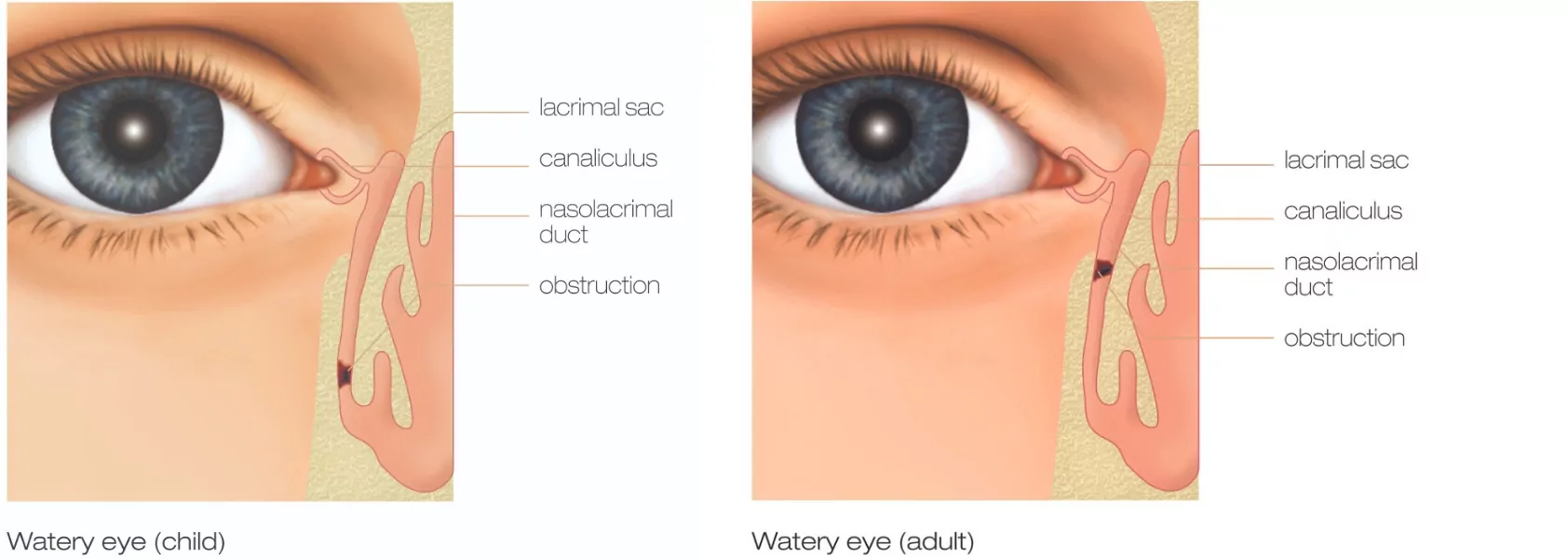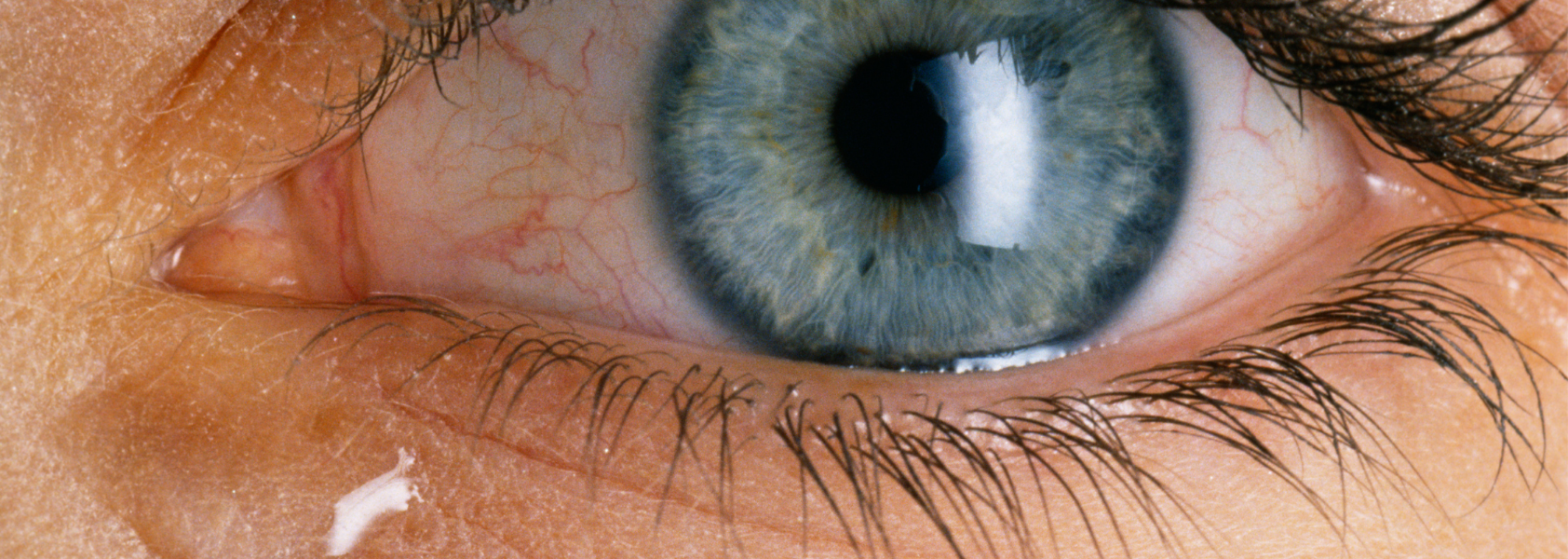Understanding watery eye
Watery eye, or epiphora, is when your eyes overproduce tears or have trouble draining them. You may also see a pus-like discharge from your puncta – the tear duct openings in the corners of your eyes.

Causes and related conditions
Ongoing watery eyes could indicate a wide range of underlying conditions such as:
Allergies, infections and irritants
If allergies, infection or irritants are causing your tear overproduction, directly treating these underlying issues will help resolve symptoms.
Blepharitis
Inflammation in the eyelid glands can be caused by allergic skin conditions, allergies or sensitivities, lice, drug allergies, or damage caused by physical injury, smoke or fumes. Compresses, cleaning and topical antibiotics usually control these symptoms.
Dry eye
Dry eye can provoke tear overproduction as the eye overcompensates. Treatments include artificial tear eye drops, a humidifier and blinking frequently.
Reduced tear drainage
Normally, tears run through narrow passages starting at the inner corners of the eyelids, connect to tear sacs and then drain into the nasolacrimal ducts that run down into the nose.
- In babies
About a third of babies will experience reduced tear drainage and a watery eye. 90% of cases are self-resolved by the age of 12 months. If symptoms continue after 12 months, the condition may need surgical intervention. - In adults
Inflammation can cause a gradual narrowing of the upper end of the nasolacrimal duct. Other causes are scarring, infection, deformities of the eyelid or a tight punctum (the opening on the eyelid).

Diagnosing blockages
To test for a blockage, your ophthalmologist may recommend one or more of the following:
- Dye test
A few drops of dye are put into the eye to colour your tears and allow your ophthalmologist to observe how they drain. - Probing and X-ray
Narrow probes can help determine where there is blockage – your ophthalmologist will observe where the probe meets with resistance and the most likely site of the obstruction.
Non-surgical treatments
If infection or allergy causes the obstruction, antihistamines, antibiotics, warm compresses and massage may treated underlying issue.
For minor blockages, probing and syringing with saline to flush out your ducts may clear the site and resolve the issue. Severe cases may need surgery.
Surgical treatments
Dacryocystorhinostomy (DCR)
Also known as tear duct bypass surgery, this procedure creates a new drainage pathway under general anaesthesia. Roughly 90% of patients regain normal tear drainage post-surgery.
Lester Jones tube
A Lester Jones tube is an artificial duct made of Pyrex, implanted when blockages can’t be cleared by other means. This is a last resort for many people who have symptomatic watering.
Pre and post-surgery
You may need to stay until you have recovered from anaesthesia, and someone else must drive you home. In rare cases, you may need to spend a day in hospital.
After surgery, you may need to use eye drops, nose spray or saline, and it could take up to a week to see improvement in your watery eye.







